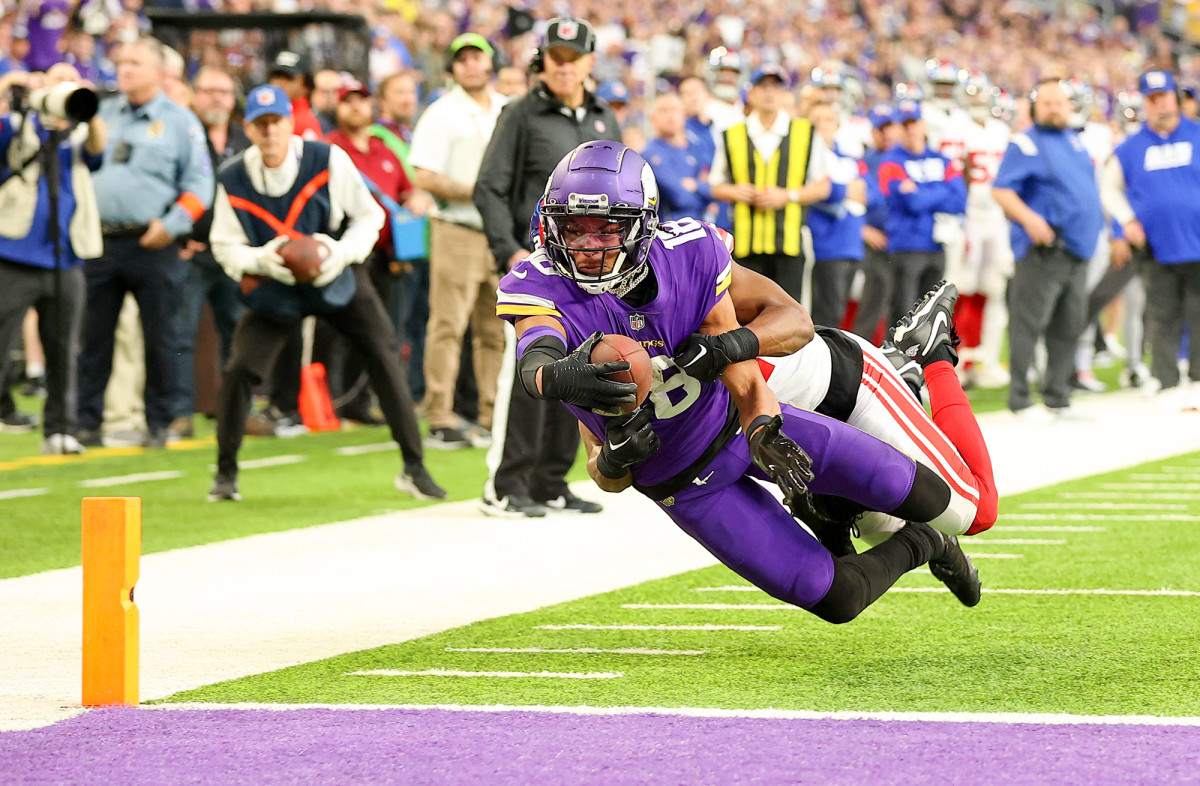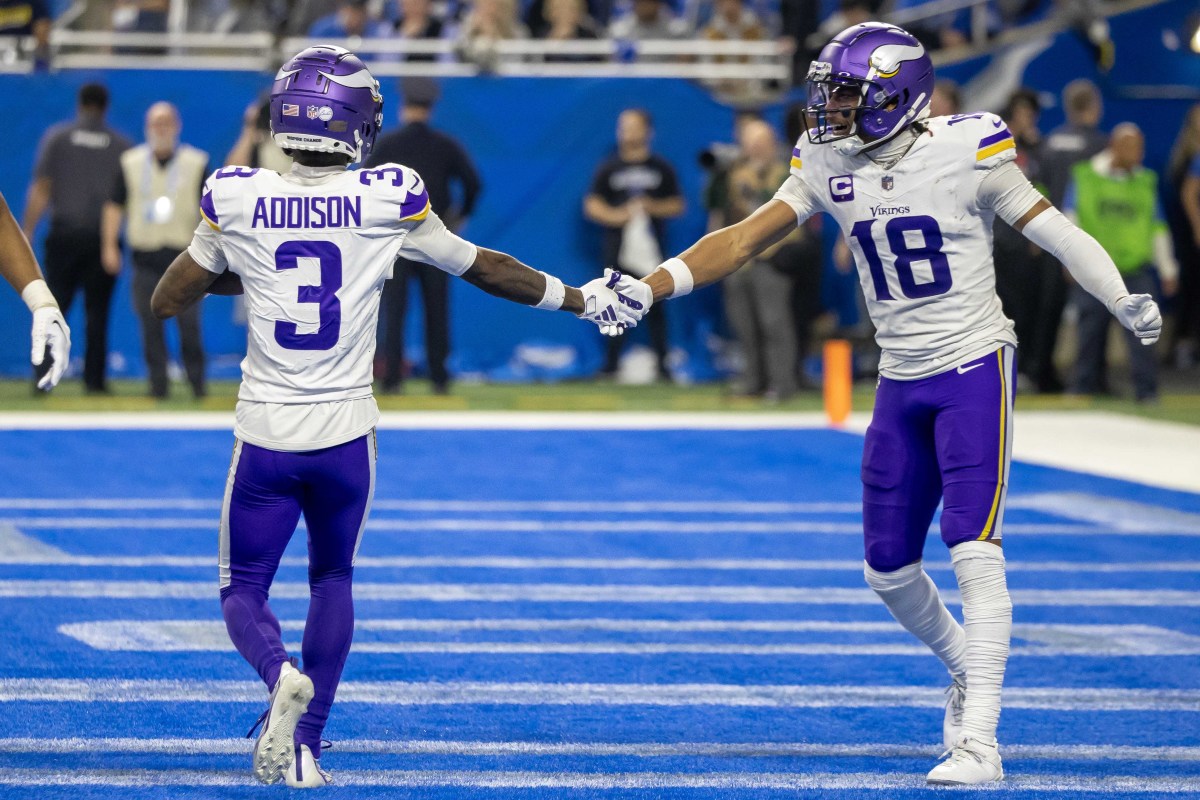Keeping Justin Jefferson Is a Surefire Way for Vikings to Remain in NFL Purgatory
When the Minnesota Vikings poached Kwesi Adofo-Mensah from the Cleveland Browns back in 2022, the now GM was billed as a sort of missing link in the football universe; an analytically inclined personnel executive who could also speak the language of those molded exclusively by matters related to scheme and film.
That was no small praise given the marketplace’s desperation for such credentials, and with that kind of runway, one would expect to see something we’ve never seen before. (Indeed, the process of finding football-minded folks who can speak the language of other departments has sent some coaches to great lengths, like one coach I heard of who pretended to interview his database manager for a scouting job over the course of 12 hours before revealing that he actually wanted him to work in the IT department and not scouting.)
The Vikings, undoubtedly, were the perfect roster for this kind of general manager. Unlike many other NFL teams whose roster tells something of a coherent story related to their immediate ability to contend (or not), Minnesota was sandwiched into this perpetual, middling purgatory. A quarterback whose upside we accept but are not necessarily enamored by. A defense that needed drastic turnover. An offensive line that could be good enough to eventually support a high powered offense. And Justin Jefferson.

Because of the success of Kevin O’Connell as a head coach, the Vikings, much like the Giants, have been unable to wholly decide which way to lean. Away from Kirk Cousins and into a modicum of rocky road before coming out the other side? Into Cousins, believing that any roster alterations would be short term enough to legitimize a very expensive (and possibly fully guaranteed) short-term contract? This team is just well coached enough to be fine in perpetuity. But for at least a small handful of owners, and a large majority of head coaches and executives, mediocre-plus is not an acceptable outcome.
Jefferson’s pending, historically massive contract—the principal issue Minnesota will have to address at this week’s scouting combine—will allow Adofo-Mensah to pull a sort of ripcord on that decision and dive headfirst one way or the other. While it’s not fair to judge anyone on one singular moment of their career, it would be an understatement to call this Adofo-Mensah’s defining hour as an executive, and, perhaps, the chance to realize all of the potential he arrived with in Minnesota.
I would argue that trading Jefferson, especially as it relates to Adofo-Mensah’s background, could be a gold mine for the GM. It may finally put the Vikings on a more sensible path that could then accentuate the kind of program Adofo-Mensah is capable of building.
To be clear, this is not a post repeating the same tired argument about teams with high-profile wide receivers being unable to win Super Bowls. Jefferson is amazing. Coaches in the league I have spoken to about him note that it’s nearly impossible to find his combination of size and “alpha” mentality, which drives him to win more contested catches than any receiver in the NFL. Adofo-Mensah is in a kind of win-win position simply because he is in possession of a generational talent. Saying it would be idiodic to trade him would be a sensible answer, too.
But if the absolute, bare-bones baseline of a Jefferson trade would be a far juicier version of the Khalil Mack trade or Jamal Adams trade, it merits consideration. If the Vikings can use the NFL draft window to clear out a team’s cache of first-round picks over the following three years—and avoid paying Jefferson a nearly (or totally) guaranteed contract that will blow past the $30 million average annual value of the Tyreek Hill deal—they would be foolish not to listen given what kind of windfall that would provide a Minnesota team still desperate for a long-term talent solution. Adofo-Mensah has already allowed the issue to reach this point. Failing to sign Jefferson before the start of last season guaranteed that he would inch closer to an unaffordable stratosphere. This is especially true now that the salary cap has expanded.
This is also true because the NFL’s best receiving corps are not necessarily its most talented, but they are the best collection of stylistically complementary players who can contribute to a scheme’s diversity through their understanding of the offense. In short: a team knows what it’s looking for, it drafts a bunch of players who fit that scheme, and a few of them are coached exceptionally well or work exceptionally hard, which yields production.
How did the Los Angeles Rams find both Cooper Kupp and Puka Nacua outside of the first round? They looked for players who could run the Robert Woods route tree, plus were physical and eager to contribute to the blocking scheme. From there, Kupp and Nacua had their hands held by a coaching staff that aided in a rapid introduction to the team’s expansive library of preformation shifts and movements. Kupp and Nacua both love to block. That helps them sell run fakes that lead to more immediate openings. And there you have it.
We can tell similar stories about the San Francisco 49ers and the Seattle Seahawks, among other teams we typically regard as having a great receiver room that did not require a hefty initial investment in terms of draft capital. Those franchises have a good idea, a set of understood traits and a relationship between the general manager and head coach that aids in the pipelining of those players. Not every team can do this or has the intellectual acumen or emotional intelligence to pull it off. Minnesota does.

So, why can’t the Vikings go that route, using Jordan Addison as a starting foundation and the slew of picks as a nice scoop of mortar to go along with it? O’Connell comes from the Rams’ room where a lot of these ideas were generated. Adofo-Mensah, like we said, speaks the language. They are not going to find another Justin Jefferson in the draft, but, over the course of two years with a smart allocation of those picks, they could find a troika of players who, for a fraction of the cost, would eventually eclipse the production and still allow the Vikings to be a schematically diverse offense.
Again, we’re not going to say that keeping Jefferson is incorrect or lazy. Keeping one of the best players we’ve ever seen at the position feels like good business. But does it provide the maximum potential for the Vikings as an organization, given the brain power many believe they are in possession of, both in the head coaching seat and in the general manager’s office? It does not.
Adofo-Mensah was a massive swing for precisely a moment like this. It’s time to see what he can find walking up and down the dimly lit bars of Indianapolis dangling the greatest non-quarterback trade chip we’ve seen since the turn of the millennium.
